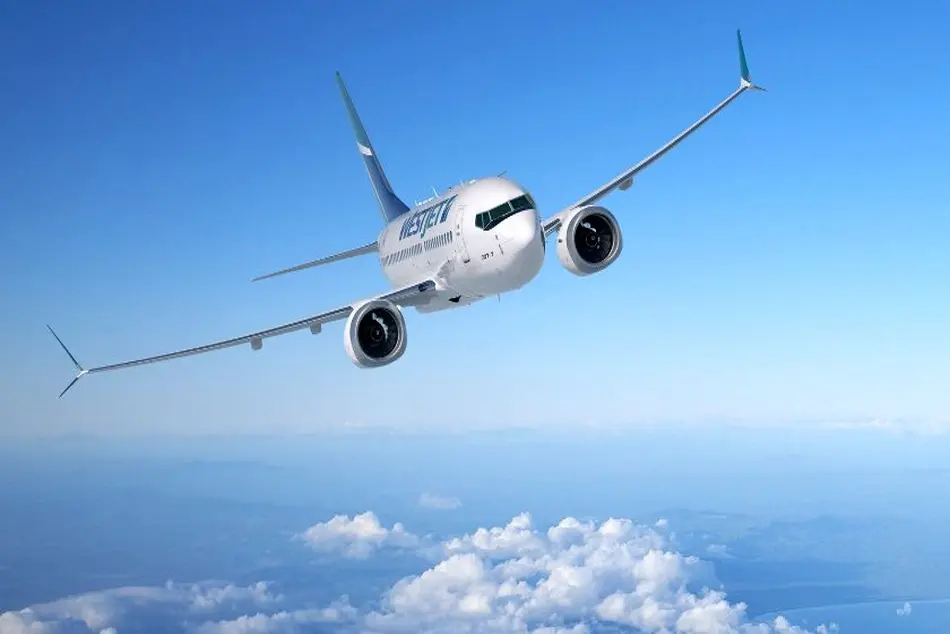Opinion: How Industry Can Mitigate Maturing Airliner Fleets
Commercial airplane fleets are aging at an alarming rate, and the implications—ranging from higher maintenance, repair and overhaul costs to reduced ability to meet ambitious sustainability targets—are troubling for operators.

Commercial airplane fleets are aging at an alarming rate, and the implications—ranging from higher maintenance, repair and overhaul costs to reduced ability to meet ambitious sustainability targets—are troubling for operators.
The average age of the fleet is frequently cited as a measure of the fleet’s fuel efficiency and airlines’ maintenance spending. Since 2000, the average age has gone through several cycles. Following industry-rattling events like 9/11 and the global financial crisis, struggling airlines deferred and canceled orders for new aircraft, which resulted in faster growth spurts in the average age. However, even as market conditions stabilized, OEMs were not able to deliver aircraft at a sufficient pace to return the average age to pre-crisis levels. Consequently, by the end of 2018, the fleet was 1.3 years older than in 2000 in aggregate.
In the aftermath of the Boeing 737 MAX grounding in 2019, the COVID-19 pandemic and ongoing challenges that are delaying aircraft deliveries, history is repeating itself. The fleet aged 1.3 years in 2000-18 and then another 1.5 years in the shorter five-year window through 2023. The out-of-warranty fleet, defined as aircraft older than five years, shows an even more dramatic shift. At the end of 2018, 73% of the fleet was out-of-warranty; that share grew to 83% by the end of 2023.
The average age of the passenger fleet is poised to continue rising, given ongoing delivery delays for new aircraft. AeroDynamic Advisory does not expect a return to 2018 delivery levels until around 2027, and that milestone may slip to the right with the fallout from strikes and the whack-a-mole nature of supply chain bottlenecks that are difficult to contain. In a more optimistic scenario, the narrowbody fleet age will remain stable while widebodies continue to grow older. But it is more likely that the overall fleet will age another 1-2 years by 2033. To return the fleet age to 2019 levels by 2033, 5-10% more narrowbodies and 30-40% more widebodies would have to be delivered than are forecast to be handed over.
The continued aging of the fleet is no doubt a strong tailwind for commercial aftermarket demand. Aftermarket-centric OEM stocks will benefit from the growing number of out-of-warranty aircraft, and low availability of used serviceable material will present strong pricing opportunities for mature fleets. The maintenance, repair and overhaul (MRO) providers that support these fleets will also be strong beneficiaries as operators scramble to keep older engines in serviceable condition and conduct additional heavy maintenance visits and interior retrofits.
For airlines, an aging fleet increases pressure on maintenance costs. While maintenance historically represented about 10% of airline expenses, it has crept up closer to 15%, representing total spending of about $122 billion in 2023. Inflation has certainly played a role in this, but older fleets also drive nonroutine tasks during maintenance events, and parts become more difficult to source. Some airlines will be better prepared to offset this cost creep, especially those that have strong in-house MRO resources and are more open to alternative solutions. However, most airlines will find their options limited due to external restrictions from lessors and OEMs or internal restrictions related to resources or culture.
The aging fleet also threatens airlines’ ambitions to become more sustainable. The International Air Transport Association’s net zero 2050 goals are already daunting, and approximately 13% of the pathway depends on new-technology aircraft, according to the association. With the continued shortfall in deliveries of new-technology platforms and new aircraft designs not expected until the 2030s, that pathway is narrowing every day. This in turn increases the urgency to fill the gap with sustainable aviation fuel or market-based measures.
History demonstrates that the fleet ages most quickly following an exogenous event and does not decline in age for a long time thereafter. We cannot expect new aircraft deliveries to accelerate enough to make fleet age decline meaningfully. We must adapt to the new reality. Airlines need to draw MRO best practices from peers and suppliers that routinely deal with older aircraft and evaluate other options to reach their sustainability goals. OEMs must devote resources and investment to address mature fleets properly instead of only focusing on new platforms. Lastly, MRO providers must be prepared to invest in the capacity, capabilities and solutions to keep the ecosystem a well-oiled machine.
Mike Stengel is a principal at AeroDynamic Advisory and an FAA-certified commercial pilot.